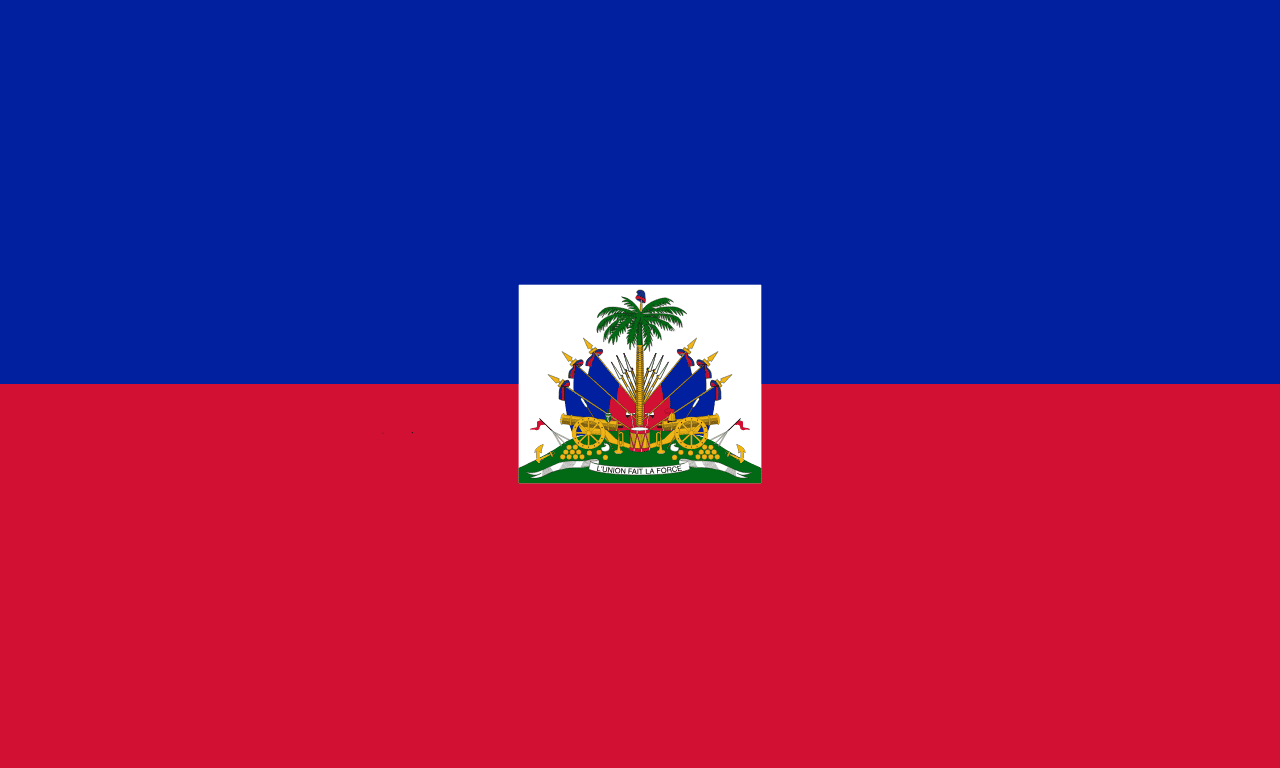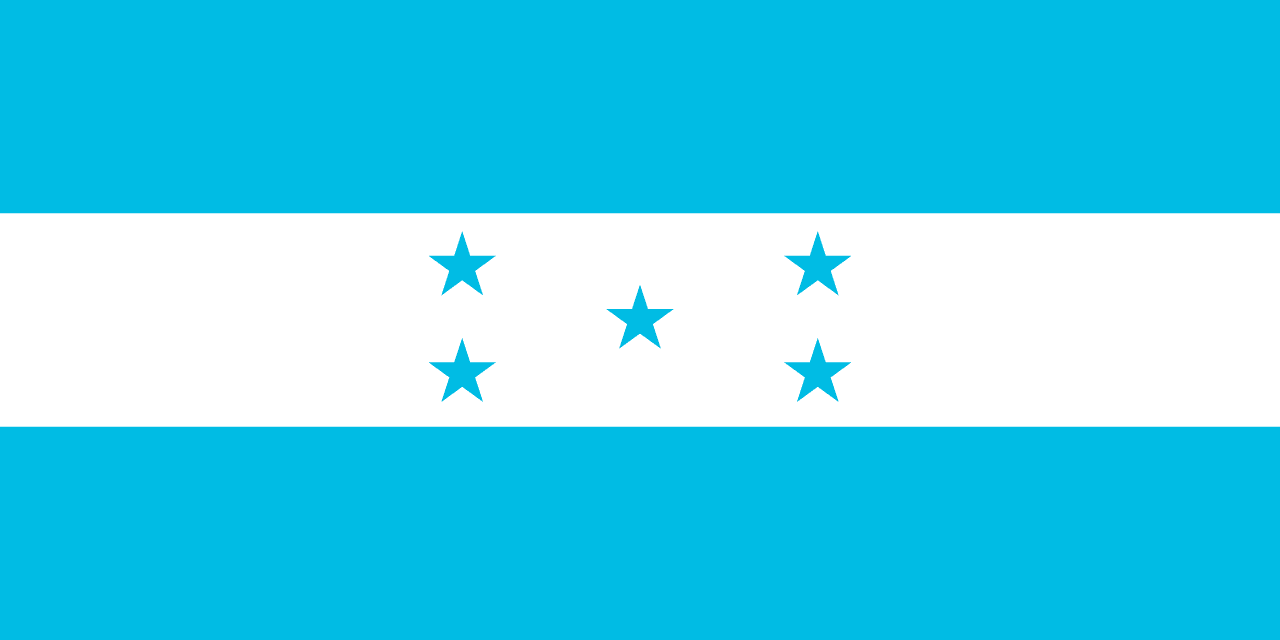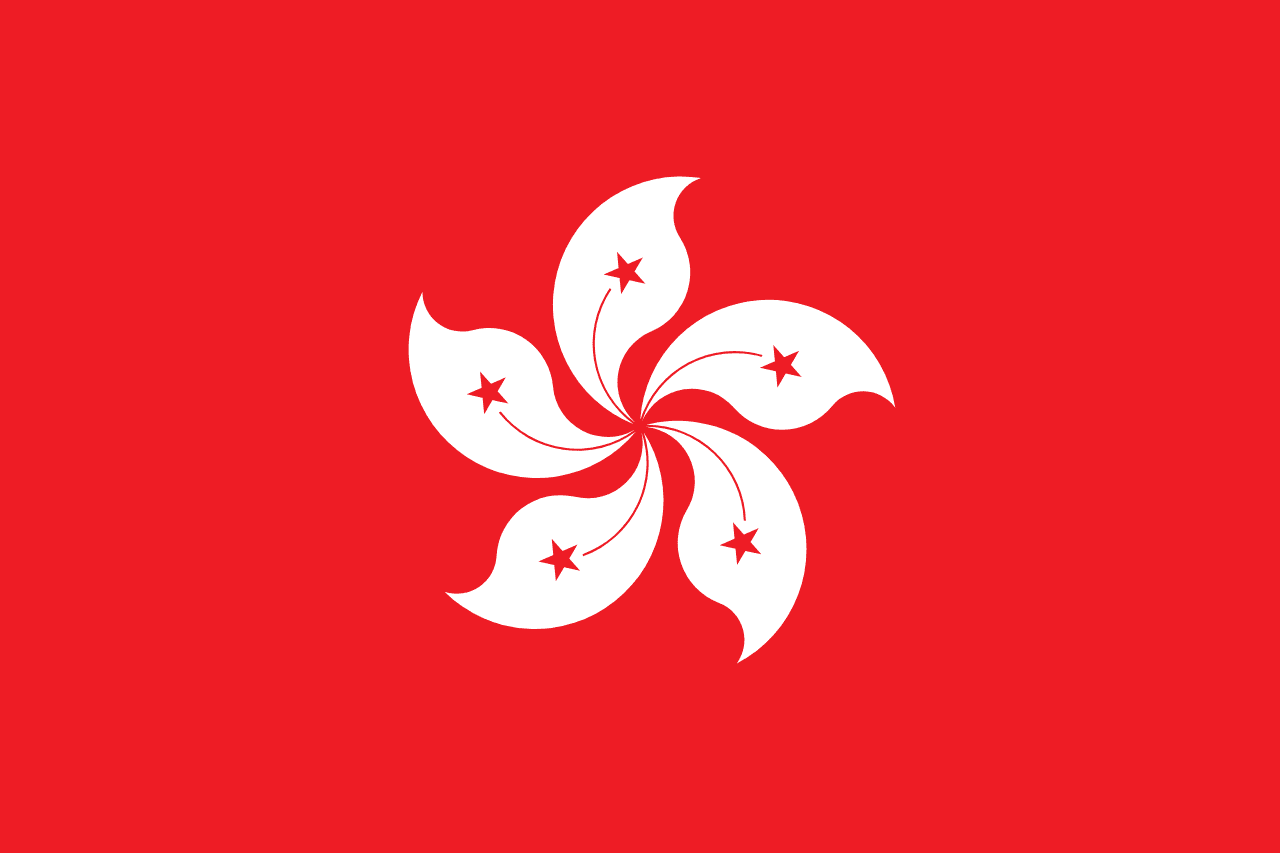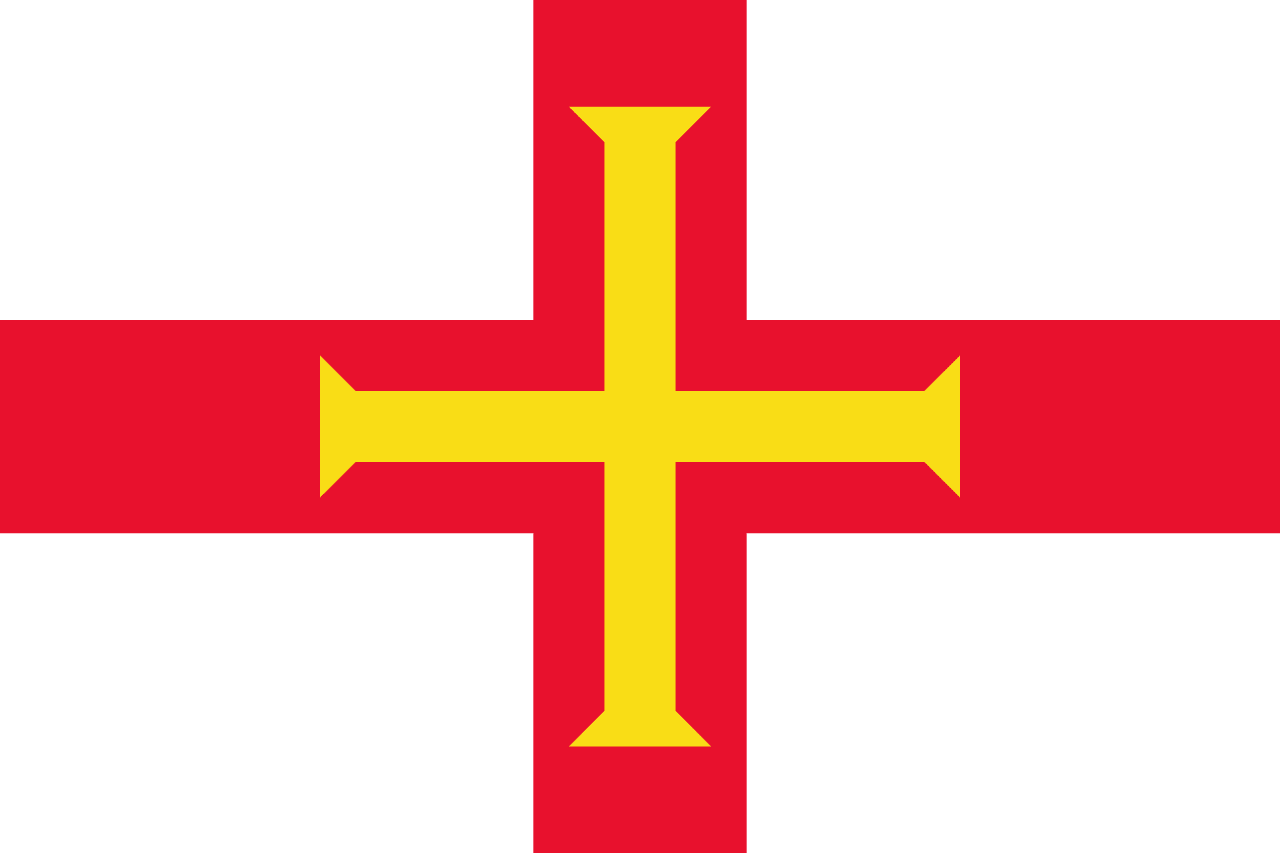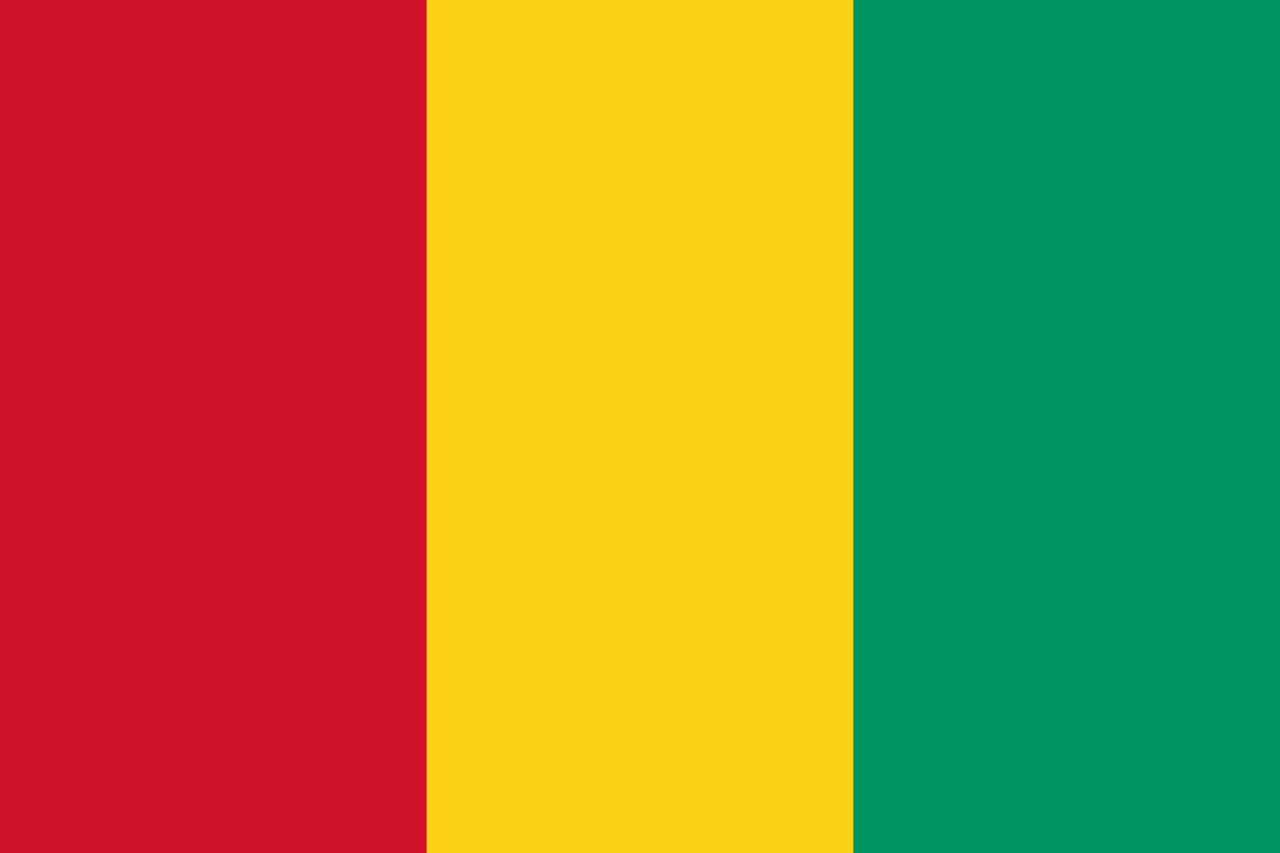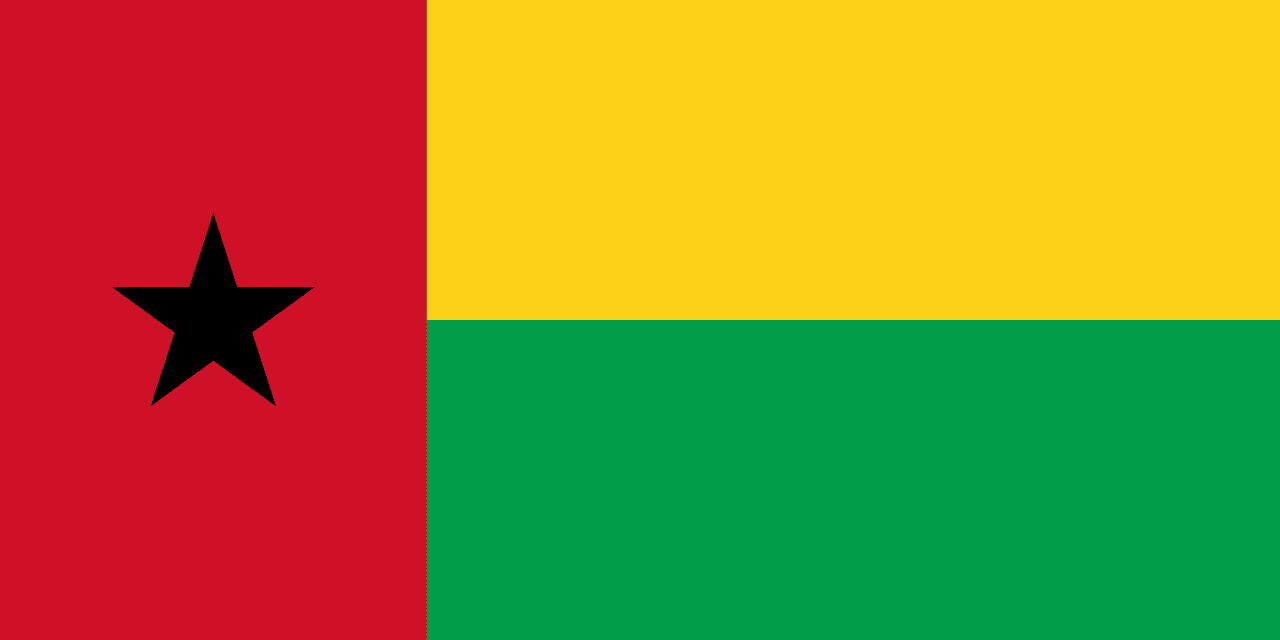The flag of Guyana, affectionately known as the "Golden Arrowhead", features a vibrant green field with a distinctive red isosceles triangle on the hoist side, bordered by two narrow white stripes. A golden-yellow triangle, bordered by black, extends from the center to the fly end. This unique design encapsulates Guyana's rich natural heritage, cultural diversity, and aspirations for the future.
Guyana information
| National Flag Day | May 26 |
| Sovereign state | Yes |
| Official name | Co-operative Republic of Guyana |
| Capital | Georgetown |
| Population | 786,126 |
| Area | 214,969 km² |
| Currency | Guyanese dollar (GYD) |
| Language | English |
| Continent | South America |
| Region | Caribbean |
| Subregion | South America |
| Borders | Brazil, Suriname, Venezuela |
| Timezone | Guyana Time (GYT) UTC-4 |
| Calling code | +592 |
| Top-level domain | .gy |
History of the Guyanese Flag
 The Guyanese flag was officially adopted on May 26, 1966, coinciding with the country's independence from British colonial rule. The design was the result of a collaborative effort led by Whitney Smith, an American vexillologist, in conjunction with the College of Arms in London. The flag's creation was part of a broader movement to establish symbols of national identity for the newly independent nation.
The Guyanese flag was officially adopted on May 26, 1966, coinciding with the country's independence from British colonial rule. The design was the result of a collaborative effort led by Whitney Smith, an American vexillologist, in conjunction with the College of Arms in London. The flag's creation was part of a broader movement to establish symbols of national identity for the newly independent nation.
Symbolism and Design of the Guyanese Flag
Each element of the "Golden Arrowhead" flag is imbued with deep symbolism. The green field represents Guyana's lush forests and agricultural wealth, covering over 80% of the country's land area. The red isosceles triangle symbolizes the zeal and dynamism of the Guyanese people in their pursuit of development and progress. The golden-yellow triangle, reminiscent of an arrowhead, represents the country's mineral resources, particularly its gold and bauxite deposits. The black border of this triangle signifies the endurance and perseverance of the Guyanese people. The white borders flanking the red triangle symbolize Guyana's many rivers and immense water potential, including the potential for hydroelectric power.
Usage and Significance of the Guyanese Flag
 The Guyanese flag serves as a powerful emblem of national identity and unity. It is prominently displayed on government buildings, schools, and public spaces across the country. During national holidays such as Independence Day (May 26) and Republic Day (February 23), the flag takes center stage in celebrations and parades. In international forums, such as the United Nations and regional Caribbean organizations, the flag represents Guyana's sovereignty and its place in the global community. The "Golden Arrowhead" design is also incorporated into various national symbols and official documents, reinforcing its significance in Guyanese culture and governance.
The Guyanese flag serves as a powerful emblem of national identity and unity. It is prominently displayed on government buildings, schools, and public spaces across the country. During national holidays such as Independence Day (May 26) and Republic Day (February 23), the flag takes center stage in celebrations and parades. In international forums, such as the United Nations and regional Caribbean organizations, the flag represents Guyana's sovereignty and its place in the global community. The "Golden Arrowhead" design is also incorporated into various national symbols and official documents, reinforcing its significance in Guyanese culture and governance.
Interesting Facts About the Guyanese Flag
- The flag's unique "Golden Arrowhead" design sets it apart from other national flags, making it instantly recognizable on the international stage.
- Guyana is the only English-speaking country in South America, and its flag reflects this unique cultural position, blending Caribbean and South American influences.
- The flag's colors – green, white, gold, black, and red – are often used in national dress and cultural celebrations, reinforcing their significance beyond the flag itself.
- Despite some political debates over the years, the flag has remained unchanged since its adoption, testament to its enduring appeal and unifying power.
- The flag's design was partially inspired by the flag of the People's National Congress, one of Guyana's major political parties at the time of independence.
